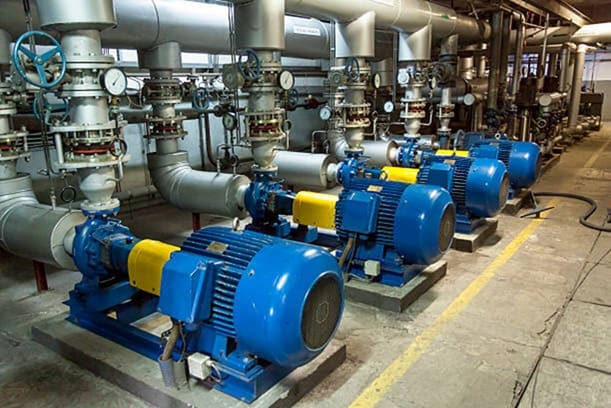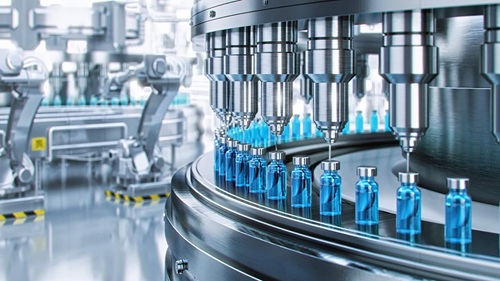Introduction
Mining in Canada presents a unique set of environmental and operational challenges. From remote locations in the Yukon and Northwest Territories to the extreme cold of Northern Ontario and Alberta, Canadian miners have to compete with harsh conditions that demand rugged and reliable equipment. Among the essential tools in their arsenal are slurry pumps, which are necessary for efficiently ferrying solids and fluids during mining operations.
This article talks about how slurry pumps for mining enable Canadian operators to overcome these challenges. We’ll delve into their applications, benefits, and what makes them an indispensable component of slurry pumping systems used across the country.

Source- Pump And Dredge Direct
Understanding Slurry Pumps
Slurry pumps are specialized equipment designed to handle abrasive, corrosive, and high-solid-content fluids commonly encountered in mining and mineral processing. Unlike standard water pumps, slurry pumps are engineered to withstand wear and tear caused by solid particles, making them suitable for transporting slurry, a mixture of water and finely crushed rock or minerals.
Types of Slurry Pumps
The mining industry typically relies on several types of slurry pumps, including:
- Centrifugal Slurry Pumps: The most commonly used type, suitable for high flow and moderate pressure.
- Submersible Slurry Pumps: Designed to operate while submerged, often used in mine sumps and flooded areas.
- Peristaltic Slurry Pumps: Suitable for metering or chemical handling with viscous or shear-sensitive slurries.
Key Components and Materials
Heavy-duty slurry pumps are built with wear-resistant materials such as high-chrome alloys, rubber linings, and ceramic coatings. Fundamental components include:
- Impellers: Designed for maximum efficiency and abrasion resistance.
- Casings: Protect internal components and maintain pressure.
- Sealing Mechanisms: Prevent leakage and handle high-pressure environments.
These design elements allow pumps to survive high-stress conditions typically found in Canadian mining sites.
The Role of Slurry Pumps in Canadian Mining Operations
Canadian mining operations are often located in regions with sub-zero temperatures, permafrost, and limited infrastructure. These conditions require equipment that is not only efficient but also capable of operating in extreme environments.
Performance in Extreme Climates
Slurry pumps must perform consistently in freezing temperatures and withstand the impact of ice formation, water ingress, and thermal shock. Manufacturers offer insulated housings, heating elements, and materials selected for cold resistance to ensure pumps do not seize or degrade during the winter months.
Remote Operations
Transporting heavy machinery into isolated locations can be a logistical nightmare. As a result, industrial slurry pumps used in these regions are often modular, lightweight, and designed for easy on-site maintenance. This minimizes downtime and eliminates the need for frequent external support.
Applications of Slurry Pumps for Mining
Slurry pumps are used throughout the entire mining cycle, from extraction to waste management. Key applications include:
Mineral Processing Pumps
During crushing and grinding, ores are reduced to fine particles. Mineral processing pumps move this slurry through various separation processes such as flotation, magnetic separation, or leaching.
Mine Dewatering Equipment
Flooding can severely disrupt operations. Mine dewatering equipment relies heavily on slurry pumps to remove water mixed with solids from underground or surface mines, ensuring safe and dry working conditions.
Tailings and Waste Management
Once valuable minerals are extracted, the leftover material (tailings) needs to be transported to containment facilities. This task is ideally suited for slurry transport solutions, which handle abrasive and corrosive materials efficiently.
Advantages of Industrial Slurry Pumps in Harsh Conditions
The benefits of using specialized slurry pumps for mining are numerous, especially in Canada’s unforgiving terrain.
High Wear Resistance
These pumps are designed to handle coarse and abrasive materials without quick degradation. This means fewer replacements and longer lifespans compared to standard pumps.
Energy Efficiency
Optimized impeller design and improved hydraulics ensure that slurry pumping systems deliver more flow per unit of energy, reducing operational costs over time.
Reduced Downtime
Thanks to powerful construction and easy-to-service designs, maintenance is less frequent and quicker. This is especially necessary in remote Canadian mines where access to replacement parts or technicians can be delayed by weather or logistics.
Scalability
Modular systems allow for customization depending on the scale of operations. Whether operating a small open-pit mine or a massive underground complex, slurry systems can be scaled accordingly.
Choosing the Right Mining Slurry Pump
Selecting the right pump can dramatically affect functional efficiency and gear longevity. Key factors to consider include:
- Flow Rate: Determines the size and speed of the pump required.
- Solids Concentration: Affects material selection and impeller design.
- Particle Size and Abrasiveness: Determines wear-resistance needs.
- Chemical Composition: May necessitate corrosion-resistant materials.
- Discharge Pressure: Influences pump power and casing strength.
Comparison of Heavy-Duty Slurry Pump Models
| Pump Type | Ideal Application | Advantages | Considerations |
| Centrifugal Slurry Pump | General mineral transport | High flow, durable | Needs periodic maintenance |
| Submersible Slurry Pump | Dewatering, flooded areas | Easy installation, compact | May require lifting equipment |
| Peristaltic Slurry Pump | Chemical & viscous fluids | Accurate flow control | Limited flow capacity |
Proper system design should also consider piping layout, elevation changes, and the potential for sediment buildup.
Future of Slurry Pumping in Canadian Mining
The mining industry in Canada is shifting toward automation, sustainability, and digital monitoring, and slurry pumping systems are growing to match these priorities.
IoT and Predictive Maintenance
Modern pumps are increasingly equipped with sensors that monitor flow, pressure, vibration, and temperature. This data helps predict failures before they occur, allowing proactive maintenance.
Environmental Compliance
Tighter regulations are pushing mines to reduce emissions and waste. Efficient slurry handling in mining not only reduces energy use but also assists in managing tailings in a more controlled and eco-friendly manner.
Automation and Remote Operations
Autonomous mines require systems that can perform with minimal human intervention. Smart pumps integrated into automated systems can adjust flow, detect blockages, and self-regulate, ensuring seamless technique even in the most remote locations.
Conclusion
Slurry pumps play an important role in helping Canadian miners navigate some of the harshest working environments in the world. From transporting abrasive materials to keeping mines dry and operations running smoothly, these robust machines are at the core of Canadian mining operations.
By investing in reliable, high-performance mining slurry pump systems, operators not only improve productivity but also reduce downtime and environmental risk. As the industry continues to evolve, slurry pumps will remain a cornerstone of efficient and sustainable mining in Canada.

